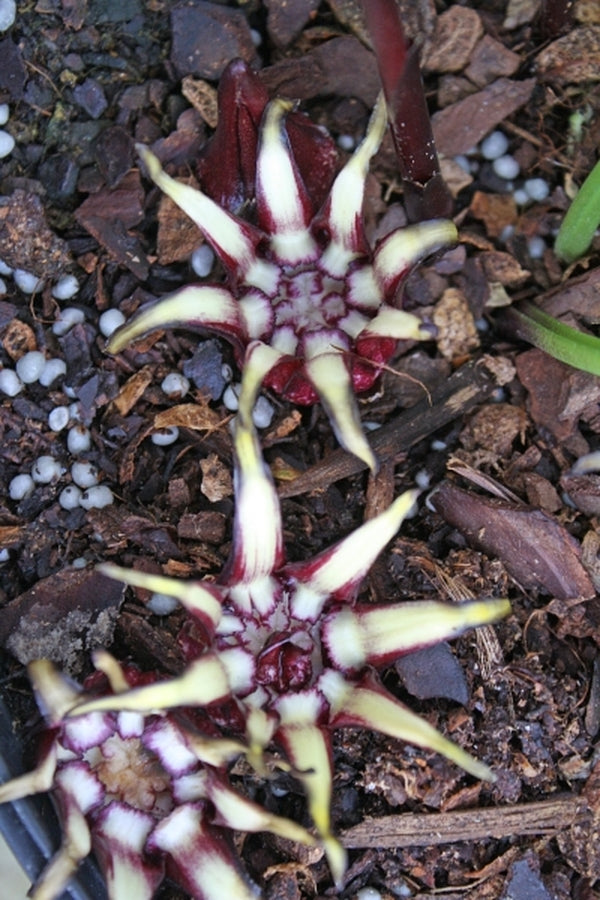Aspidistra pulchella 'Kunming Starlet'
Kunming Starlet Cast Iron Plant
This plant is not currently for sale. This is an archive page preserved for informational use.
Shop Available AspidistraItem #: 9406
Zones: 8a to 10b
Dormancy: Evergreen
Height: 18" tall
Origin: China
Pot Size: 3.5" pot (24 fl. oz/0.7 L)
This amazing Chinese cast iron plant has wide, glossy, evergreen leaves on a short petiole. Each leaf is heavily speckled with small golden spots...many more than on Aspidistra 'Stretch Marks'. Aspidistra guangxiensis is one of the latest flowering aspidistra species...if you remember to look, the ground around the base will be covered in early June (NC) with bizarrely unusual maroon and yellow flowers that resemble those cartoon characterizations of the sun. In cold winters below 15 degrees F, the foliage may be deciduous.
Maintenance:
Aspidistra are very low maintenance perennials. Each leaf can last up to 3 years, but after the second year, it will begin to show signs of aging and leaf degradation. For that reason, we recommend removing all old foliage regularly to retain the attractiveness of the clump. It's always disappointing to see large patches of cast iron plants in public spaces where it hasn't been properly maintained.
Growing Conditions:
Cast iron plants grow well in both moist and dry soils as long as the drainage is good. Aspidistra must be grown in shade, since their foliage will scorch if they are subjected to sun. In the jungles where they grow, they are often seen in very deep shade.
In containers, they make superb house plants. The common name cast iron plant speaks to their durability in less than ideal conditions. Regular moisture, including increased humidity when they are grown as house plants, keeps them from getting stressed and becoming susceptible to spider mites.
Garden Value:
The bold texture and upright form of cast iron plants is invaluable in the garden, since there few other plants with this form and texture. Many have amazing flowers, produced at the base of the foliage, often in the winter months. While these flowers are rarely noticed in the garden, they can be quite attractive in the home.


-
Other Attributes
Genus: Aspidistra
Flower Color: Purple/Lavender
Leaf Color: Green , Variegated , Yellow/Gold
Bloom Time: Summer
Container Role: Thrillers
Garden Themes: Living Wall
Other: Deer Resistant Plants , Drought Tolerant Plants , Dry Shade Plants , Groundcovers , Medicinal Plants , Plants from China , Rabbit Resistant Plants , Rain Garden Plants , Salt Tolerant Seaside Plants , Tropical Looking Plants , Xeriscaping Plants , Colored Foliage , Patterned Foliage


